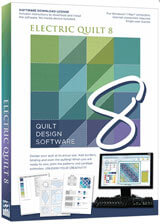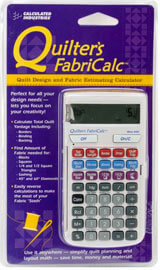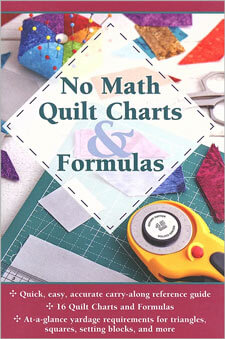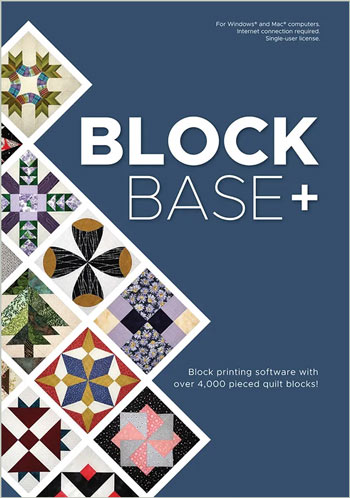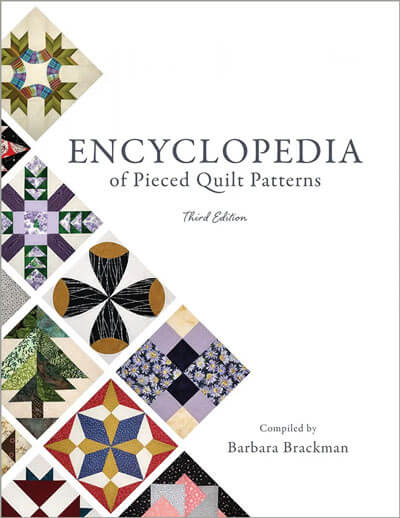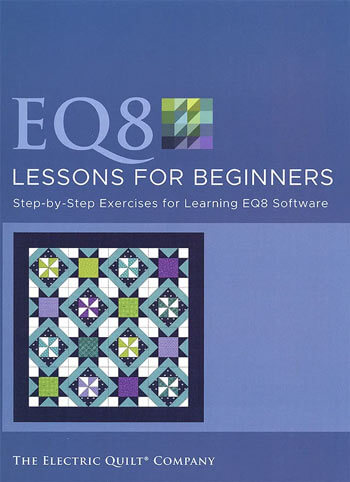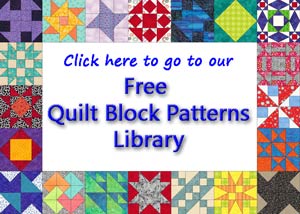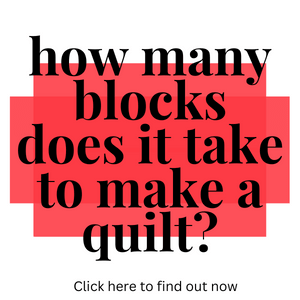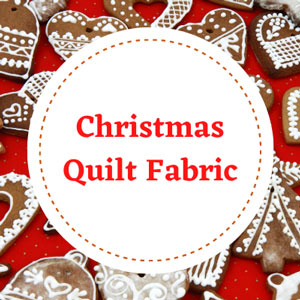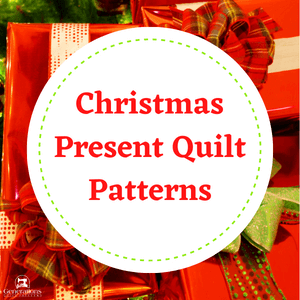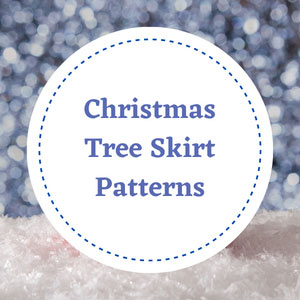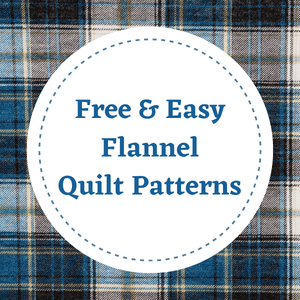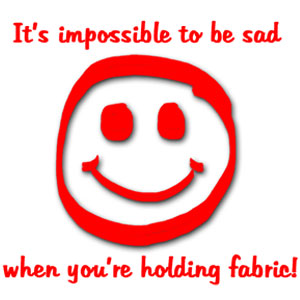- Home
- Quilt Design Inspiration
- Irish Chain Quilt Pattern
Irish Chain Quilt Pattern
Part 1: A Great Beginner Quilt with Room to Grow
This post contains affiliate links, for which I receive compensation.
The Irish Chain is one of those terrific quilts for beginners—it's all strips and squares—no triangles or bias edges to deal with. No fancy rulers to buy.
Perfect for practicing your quarter inch seam allowance and rotary cutting skills. A great beginner quilt!
But it's not JUST for the beginning quilter.
Appliquers have space to add their favorite applique without a bunch of complicated, time consuming piecing.
The same goes for those with new machine embroidery designs they can't wait to stitch out.
And finally, machine and hand quilters have a place to showcase their fancy stitching.
Tools to make quilt designing easier...
Click any image for more information, reviews, and pricing.
Common Irish Chain Quilt Layouts
An Irish Chain quilt is typically in one of the three following layouts:
- Single
- Double or
- Triple
In the following illustrations, I've left off the borders to simplify the designs and make it easier for you to identify each individual block.
All of the illustrations were created in Electric Quilt, my favorite quilt design software.
Single Irish Chain Quilt Pattern
This quilt is made from solid squares and simple nine patches using just two fabrics—a background and a contrasting fabric. Constructed with a 3x3 grid, these quilt blocks are shown below:
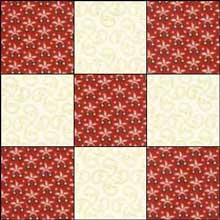 Block 1
Block 1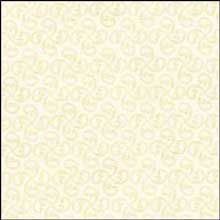 Block 2
Block 2When the two blocks are alternated in horizontal rows, they form this pattern:
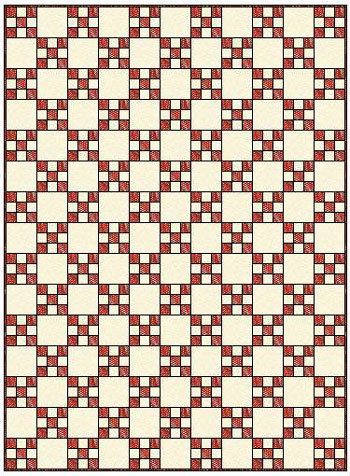 Single Irish Chain quilt pattern
Single Irish Chain quilt pattern11 x 15 blocks
See how the darker fabric in the nine patch blocks forms diamond-shaped frames around the light solid squares.—you might need to squint to see it.
But since the 'chains' are only one fabric wide, the pattern is less distinct.
Click here to learn more about a single Irish Chain.
Double Irish Chain Quilt Pattern
This quilt pattern uses three fabrics—two for the 'chains' and one for the background. The blocks for this are based on a 5x5 grid and shown below.
 Block 1
Block 1 Block 2
Block 2At first glance it might not look like it, but the red fabric in Blocks 1 and 2 above is the same fabric, it's just how EQ cut the patches within the program. (Sorry if there's any confusion! It looks more like one fabric in the example quilt pictured below.)
When these blocks are alternated in a straight or horizontal set, the result is...
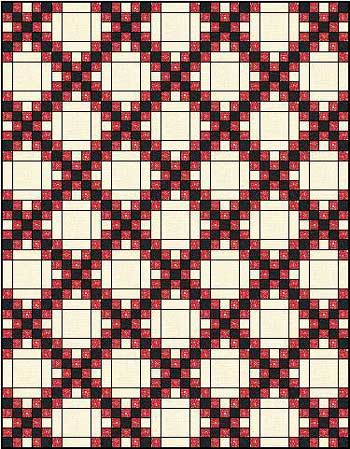 Double Irish Chain quilt pattern
Double Irish Chain quilt pattern7 x 9 blocks
With the addition of a second 'chain' fabric, the design is much easier to see.
Click here to learn more about Double Irish Chains.
Triple Irish Chain Quilt Pattern
This pattern requires four fabrics— three for the 'chains' and one background fabric. Your quilt blocks are based on an 7x7 grid and look like this:
 Block 1
Block 1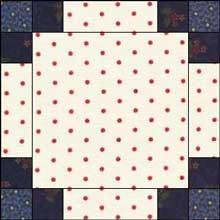 Block 2
Block 2Assembling in horizontal rows creates a quilt that looks like this...
 Triple Irish Chain quilt pattern
Triple Irish Chain quilt pattern7 x 9 blocks
The chain pattern is even more dominant when it's made from three fabrics.
Common Characteristics of Irish Chain Quilts
Symmetry
For this two-block, straight set quilt layout, notice that each quilt is drafted with odd numbers of blocks in both the rows and columns. This is a must for a symmetrical design.
My preference is for the chain to be visually dominant so Block 1 is always in each of the four corners in my own quilts.
However, there is nothing to hold you back from putting Block 2 in the corners. It's up to you how to design your own quilts.
This is how it would look as a Triple Irish Chain quilt pattern design.
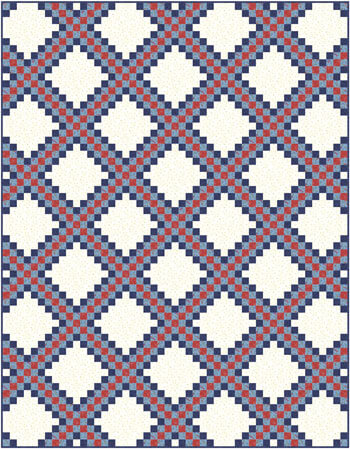 7 x 9 blocks
7 x 9 blocksBlock 2 on the outside corners
Did you notice that all the outlines around the patches and blocks are gone in this illustration? The chains really stand out without them.
Fabric Choices
Light background fabrics give this quilt a more traditional feel. A dark background can add a lot of drama and give the quilt a more contemporary look.
Or reverse the lights and darks completely for a totally new look.
A limited fabric palette and/or a limited value palette emphasizes the 'chain' pattern.
Piecing Technique
Strip piecing is the most efficient way to piece this pattern, particularly with a limited fabric palette.
Should you choose the 'scrappy route' to use up some of your fabric stash, the cutting and piecing takes more time due to the different sizes of the scrappy fabric scraps you'll use up and the fact that each seam is sewn individually. Not massed produced like strip piecing allows.
Design Opportunities
The open spaces in Block 2 of both the 'double' and 'triple' Irish Chain blocks are perfect for adding quilting designs to personalize this beginner quilt pattern.
Or use them to showcase applique (by hand or by machine) or machine embroidered designs.
Pre-planning is be crucial.
The pattern may need to be
re-drafted so that finished size of this open space matches the size of
the embroidery or applique design. If you choose an on-point layout,
you'll need to be sure to orient the designs correctly on the block.
With proper planning, the Irish Chain creates a nice setting for small exchange blocks from your bee or quilt guild—where the exchange block replaces the center square of the Block 2.
Take your Irish Chain quilt pattern to the next level...
These quilts don't need to stop at 'triple'. You can create as thick a chain as you'd like with a bit of pattern drafting.
Or how about instead of the standard 'double' and 'triple' Block 1's, create those blocks in a checker board with just a background fabric and a single color to create a 'Checkerboard' Irish Chain.
Reverse light and dark for yet another variation.
Colorwash an Irish Chain quilt pattern.
Use fabrics for
the chain that blend into each other (like hand-dyed gradated fabrics
or the floral prints used in other colorwash quilts). The resulting
chains are not as distinct because the links of the chain blur together.
A more feminine effect I think.
With a little imagination, whether you are a beginning quilter or more experienced, there is something sure to satisfy in making an Irish Chain Quilt Pattern.
